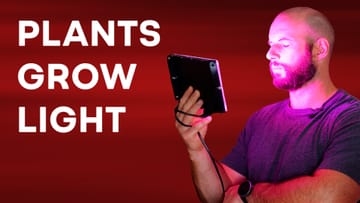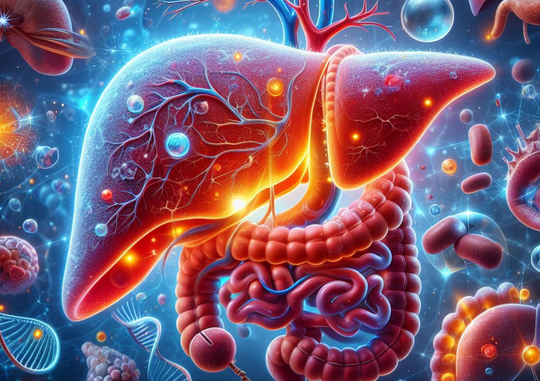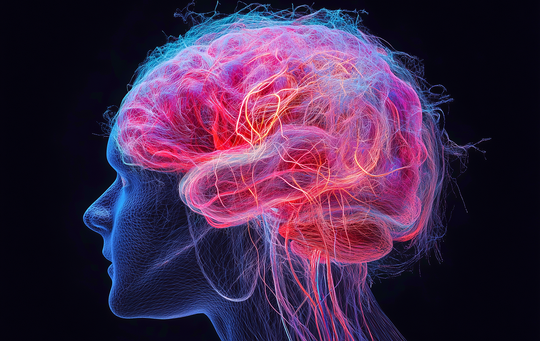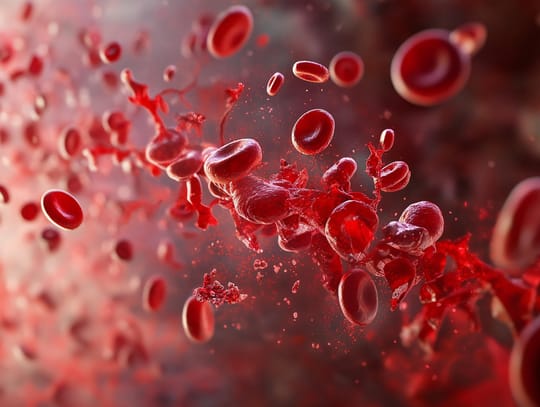Hypothyroidism - a "slow thyroid" - isn't just an abstract medical condition but something affecting you big time. Hypothyroidism lowers your energy levels, makes you gain weight, creates other hormonal problems, and causes brain fog. You'll also feel much colder than you should.
In a way, the thyroid is the "master switch" for your energy levels. The thyroid is like fire that you put inside a furnace. Yes, it's all more complicated than what I'm listing above.
But the good news?
Red light therapy has a very good track record for treating hypothyroidism. For its hyperthyroidism counterpart - where your thyroid is "too fast" - that's less the case right now. Again, I'm oversimplifying here as the thyroid and the other parts of the body it interacts with are highly complex!
In this article, I'll explore all the human research on red light therapy for hypothyroidism. That way, you'll have a much lower risk of feeling cold anymore, or having low energy, or having the skin problems associated with hypothyroidism.
If you want to understand the basics, read my summary below. If you want to understand my whole argument, however, then read this entire article!
Thyroid health is extremely important for your energy levels, overall wellness, lower disease risk, and more. In this article I'm heavily relying on Dr. Ray Peat's work on optimal thyroid function, who believes that many people even in the developing world are clinically hypothyroid.
Testing for thyroid health is often incorrect, with an emphasis on TSH only, not the active end product T3 and other important variables. Hypothyroidism symptoms include cold temperatures (especially the extremities), cold intolerance, low energy, fat and water weight gain, depression, and yet, many cases are subclinical.
Red light therapy is very promising here because it counters autoimmune thyroiditis. Many studies in humans show great improvements in overall thyroid function, better T3 levels, and conversion of the more inactive T4 into the active T3 hormone. Red light therapy at the 820 - 850 nm range has been studied best, with doses from 25 - 30 J/cm2 in the lower bound and a whopping 700+ at the upper range.
For optimal treatment with LED products, which most consumers use, I recommend doses of up to 200 J/cm2 max. You'll likely have greater benefits with lower doses. That discrepancy exists because the LEDs target a larger area than the lasers used in many of these studies.
The studies also don't show side effects. For hyperthyroidism, I would either be very cautious with red light therapy or not use it at all. No human studies have investigated this topic right now, and there are some biological mechanisms that suggest that using light therapy could be counterproductive here.
Nevertheless, there are many factors contributing to poor thyroid health. Poor sleep, mouth breathing, stress, poor liver function, and tons of different nutritional deficiencies that I mention in this article contribute. So, as almost always, I recommend holistic lifestyle interventions, not just a reliance on red light therapy. The red light therapy research for hypothyroidism is nevertheless very impressive, but we need longer-term studies and more research!
If you need an introduction to what these terms mean, check the following resources:
- What Is Red Light Therapy?
- Red Light Therapy Explained: Basic Terms Guide
- Start Here - Light Therapy 101 & Buyers Guide
- Red Light Therapy Dosing Chart: The Raw Data From Hundreds Of Studies
- Red Light Therapy Dosing: Why It's Complicated!
- Red Light Therapy Wavelengths Benefits: The Ultimate Guide
- How Often Should You Use Red Light Therapy Explained
These resources should give you a basic understanding of how red light therapy works, and the discussions around it!
The picture at the beginning of this article is AI-generated, though!
Introduction: The Importance Of Thyroid Health
The thyroid is essential to human health. Today, the average person's understanding of the thyroid in health is much better than, say, ten years ago. But there's still a long way to go.
Nobody has had a more substantial influence in my thinking on thyroid health than the recently deceased health guru Ray Peat. Peat has written extensively about thyroid health and sees "hypothyroidism" (or a "slow" thyroid) as being a universal problem among modern humanity (1; 2; 3).
Let's explore Peat's ideas in detail:
Thyroid Health And Energy Metabolism
The thyroid is like a flame for metabolism. So, the better functioning your thyroid, the more calories you'll be burning and the better your overall health will be. One of Peat's main ideas is that with greater thyroid health, your body generates more energy.
Everything in life requires energy. Without energy, you'd be dead instantly because your mitochondria wouldn't generate any electrochemical energy (4). The more energy you generate, the better your overall health tends to be. The poorer your energy, the closer to death you are.
The thyroid is at the center of that energy-generation process. And with enough energy generation, many diseases can also be averted. I've written about that topic in my article about mitochondria and light therapy. The mitochondria are the energy-producing elements of your cells and are integral to averting almost all modern (non-purely genetic) diseases.
Thyroid health is complex, though. Many different factors influence thyroid health - it's almost impossible to list them all. I'll come back to these in a second. But energy intake and specifically carbohydrate intake are extremely important there.
Yes, I'm aware that some people do really well on low-carb diets or carnivore diets! But these diets aren't for everyone, and the easy case can be made that the original human diet - where humans lived closer to the equator - is universally higher in carbohydrates, such as from fruits, honey, tubers, and so forth (5). To ensure survival, no hunter-gatherer will intentionally avoid carbohydrates.
Peat's view is similar, and he envisions carbohydrates as the superior fuel for overall and thyroid health (6). Ketosis, or avoiding carbohydrates (and excess protein) in the short to mid-term, is linked to starvation modes and non-optimal human metabolism (7).
(I don't necessarily agree with that thesis and think that many people do great on low carb or keto - it's a biological individuality thing!)
Next, let's check how you can find out whether your thyroid is functioning well or not. Because there's extensive lab testing involved here that's still misunderstood by many:
Thyroid Health Testing
One of Peat's central ideas is that the standard thyroid lab panels are horrible (8; 9). Many labs–a problem that is improving somewhat today–only test for so-called "TSH".
TSH (meaning "Thyroid Stimulating Hormone") is a test that measures the level of TSH in your blood. TSH is produced in the pituitary gland of your brain. TSH, however, only tells your thyroid to create more T4 and T3 hormones. T4 is inactive and converted into T3 - it's T3 that's most important here because it's active and what actually matters in the end.
So if your doctor gives you T4 medication, for instance, or only tells you that your TSH levels are normal, you don't know for sure whether your thyroid system is working.
Why?
Simple:
You don't know whether the body has sufficient T3 or whether that T3 is working correctly!
My friend Jay Feldman, who arguably is the primary expert on Ray Peat's work today, writes the following about this dynamic:
"So, when T3 and T4 are low, as in the low-energy state, or “low-battery mode,” TSH is generally higher. The opposite is generally true in the high-energy state, or “high-performance mode.”
TSH levels seemed like a good indicator of hypothyroidism based on the above process. So, once it could be easily measured with a blood test, it became the standard diagnostic measure for hypothyroidism. In the meantime, the other symptoms and diagnostic tests became more or less forgotten.
However, TSH is a much less direct measure of thyroid and metabolic status, so it is not as well correlated with thyroid function. For example, infections, caffeine, and chronic stress can all lower TSH, even if the thyroid hormones are low. In other words, your TSH can be within the “normal range,” and you can still be in a hypothyroid state." (9).
Hypothyroidism here means a "slow" thyroid, but a "poorly functioning thyroid system that wrecks metabolism" would be better phrasing here.
It's all more complicated than what I've written here. However, the simplified version is that testing for T4 tells you how much inactive thyroid hormone is available to the body. And, by testing for T3 you'll know how active the thyroid hormones in your body really are.
The consequences of that problem?
- If your doctor tests for TSH or T4 only, you don't know whether your thyroid hormone system is functioning correctly because you have no info on T3.
- If you get medication with only T4, you don't know whether your body converts that T4 into T3 properly.
Hence, Ray Peat claimed that many people are walking around with big hypothyroid problems without knowing it! Next up, simply medicating with a T4 and T3 combination can move the needle further, but it isn't the final fix here, often! Sometimes you'll need T3 only, as the T4 and T3 combination can be suboptimal for people.
And there's more:
Soon, you'll learn why light exposure is another important puzzle piece, here! But, next up let's consider what hypothyroidism is and why it matters:
Hypothyroidism
According to Peat, hypothyroidism (low thyroid function) underlies a wide range of chronic "conditions", including (10):
- Aging
- Fatigue
- Depression
- PMS and infertility
- Fibrosis
- Insulin resistance, linked to diabetes
- Cardiovascular disease
- Poor immunity
- Degenerative neurological conditions
- And everything in between...
Hence, almost every chronic condition imaginable is linked to poor thyroid health, except for purely genetic diseases (that you'd have since birth!). A poorly functioning thyroid is also linked to chronic stress (11).
Chronic (psychological) stress, by itself, can also lower your thyroid system function. So there can be a negative feedback loop there, with more stress leading to poorer thyroid functioning, which then leads to lower metabolism and more stress again.
So, all things considered, you'll want to avoid hypothyroidism! Here are common symptoms of hypothyroidism (12; 13; 14):
- Low energy levels
- Being cold all the time, including the extremities
- Cold intolerance (because your body's "furnace" isn't turned on!)
- Fat gain
- Holding lots of water weight, including in the face
- Insomnia
- Brain fog
- Depression or lethargy
- Constipation
- Hair thinning
- Dry skin
- Peat also assumes that a low resting heart rate and low pulse are symptoms!
No bueno!
These symptoms may not always be fully present, however, especially if the problem is subclinical. Nevertheless, lab testing your T4 and T3 levels, and taking your temperature, for instance, or just sensing your body's heat, are good ways to find out whether you're hypothyroid or not.
If your energy levels are poor and you've got depression or anxiety in the long term, it's always good to do more research in that area and find the root cause. Hypothyroidism may not be the root cause, but it's worth exploring. Thyroid testing is highly affordable in most of the world, so there's no reason to avoid it in my opinion!
Also, at the end of this article, I will explore nutritional and other strategies to fix that issue. For now, however, let's consider how mainstream science looks at this topic:
Mainstream Medical Science On Hypothyroidism
Some mainstream science publications do think that lots of people are subclinically "hypothyroid" (15). That's a good thing, as the truth about this issue may slowly be emerging.
Autoimmune conditions ("Hashimoto's hypothyroidism") and low intake of iodine (and supporting selenium) are posited as the leading causes of hypothyroidism (16). Yes, there's some truth to that, but it's also a wild oversimplification. If Peat's argument above is correct, then many people in developed countries, with adequate iodine intake, are still hypothyroid.
Nevertheless, some studies do change their tune. A recent study writes that:
"The diagnosis of hypothyroidism is based on laboratory tests that measure the levels of thyroid hormones (T3 and T4) in the blood. Treatment typically involves lifelong hormone replacement therapy with synthetic thyroid hormone replacement medication, such as levothyroxine, to help regulate hormone levels in the body. People with hypothyroidism may need to have their medication dosage adjusted over time. If hypothyroidism is left untreated, it can lead to severe complications like mental retardation, delayed milestones, etc., in infants and heart failure, infertility, myxedema coma, etc., in adults. With appropriate treatment, the symptoms of hypothyroidism can be effectively managed, and most people with the condition can lead normal, healthy lives. Lifestyle modifications like eating healthy food and exercising regularly can help manage the symptoms and improve the quality of life." (17).
Another writes that:
"After normalization of TSH and [T4] concentrations, a considerable proportion of patients treated with LT4 continue to have persistent complaints, compromising quality of life." (18).
So, promising developments are underway! There's no longer a singular focus on TSH levels, for instance, nor on just supplementing with T4. And, the problem is taken seriously now, with an emphasis on the very extensive health consequences and its impact on quality of life:
"To date, overall mortality, cardiovascular morbidity and mortality, bone health and cognitive function have been evaluated as endpoints in clinical outcomes studies in patients with treated hypothyroidism. More recent investigations have sought to establish the relationships between these end results and thyroid function during the treatment course. In addition to clinical event outcomes, patient-reported quality of life (QoL) has also been considered in the assessment of adequacy of hypothyroidism treatment." (19).
There's also finally an emphasis on vitamin D and thyroid health (20). And on gut dysbiosis and thyroid health (21). That way, conditions such as Parkinson's, gut dysfunction, movement problems, and thyroid health are linked nowadays (22). What's also interesting is that many skin problems–for which many people use red light therapy in the first place–are a sign of hypothyrodism (23).
Nevertheless, most studies underestimate the number of hypothyroidism cases from Peat's perspective (24). Studies estimate that 2.5% of the world's population is affected (24). This is contrary to Peat's thesis that a large percentage of the human population is affected, although he doesn't put a number on it! That's a huge discrepancy...
Soon, I'm going to consider light therapy for hypothyroidism specifically. But before we do, let's briefly check one more topic:
Hyperthyroidism
Lots has recently been written about hyperthyroidism or an "excessively quick thyroid" (25; 26; 27; 28; 29). That's also a misnomer, once again, because it's not just the thyroid affected here, but also the thyroid system isn't the main issue, in my opinion.
Here, about 2.5% of the world's population is affected, the medical narrative goes (25; 26). So that's about 5% of the world's population affected by thyroid problems, even in the mainstream medical literature!
A review - that integrates earlier publications on a topic - states:
"Hyperthyroidism [...] is associated with osteoporosis, heart disease, and increased mortality. First-line treatments are antithyroid drugs, thyroid surgery, and radioactive iodine treatment. Treatment choices should be individualized and patient centered." (25)
Peat´s position here is that there's often excessive (psychological) stress, nutritional deficiencies, hormonal imbalances such as estrogen, and more. I'd certainly not recommend medication or surgery as the first line of defense here! Medical science here seems to emphasize interventions such as surgery and medication only, as the solution (27; 29).
But, because light may make this issue worse and won't fix it, I won't go too much into hyperthyroidism here. Just know that solutions do exist. Some very recent publications link liver health to hyperthyroidism, for instance (28).
Light, more or less, has a very strong effect on hypothyroidism:
How (Red) Light Affects The Thyroid: Hypothyroidism First
First, I'll consider hypothyroidism and red light therapy. This topic has been investigated the most by far - I'm referring to Vladimir Heiskanen's Excel sheet that contains 8,000+ studies on light therapy here (30).
I'll consider the human studies here one by one:
- The first study shows no effect from light therapy on patients with Hashimoto's Thyroidism (the autoimmune hypothyroidism variant) (31). Here, there were only six treatments over three weeks; however, these weren't specified in great detail. However, oxidant and antioxidant status, as well as quality of life, did improve, unlike thyroid function. The study, unfortunately, doesn't provide too many details.
- Another study uses six treatments over three weeks in patients with Hashimoto's, with good improvements in thyroid function (32). An 820 nm laser was used for 20 seconds at six different points of the thyroid, for 32 J/cm2 as a dose. Researchers write:
"Our findings showed significant improvement in group 1 parameters ([red light therapy]+ supplements) compared with group 2 (supplements only) in terms of weight loss and reduction in the following parameters: BMI, hip and waist circumference, waist/hip ratio, TSH, [thyroid antibodies showing autoimmunity] and treatment dose of [T4 hormone] (p < 0.05). Our results, for the first time, demonstrated an efficacy of PBM delivered at a lower fluence with supplements in restoring thyroid function, anthropometric parameters and lifestyle factors in patients with [Hashimoto's Thyroiditis] (32).
- The supplements used here were T4, vitamin D3, and selenium, as necessitated. Both the intervention and control groups received supplements as needed, but the light therapy group had far better improvements!
- Then, there's another study with Hashimoto's Thyroiditis patients - with 850 nm light at 28.57 J/cm2 as a dose (33). Here, too, both the control and intervention groups received supplements. The researchers write that:
"As we compare both groups, the increase in T3 levels and T3/T4 ratio was markedly superior in Group 1 [which received light therapy] (p = 0.0001). The decrease in thyroid peroxidase antibody (TPO Ab) levels was also significantly different between both groups (p = 0.0001). Hormone replacement needs were also significantly decreased in Group 1 compared with Group 2 (p = 0.03). [Red light therapy] is 70 times more effective in increasing T3/T4 ratio (p = 0.001) and 15 times more effective in decreasing levothyroxine dosage" (33).
- So, light therapy here reduces medication requirements (such as T4), reduces antibodies (which indicate autoimmunity), and helps overall thyroid function (as indicated by a better T3/T4 ratio, meaning that T4 was more successfully converted into T3. Amazing outcome!
- Another study also shows an excellent outcomes for autoimmune thyroiditis (34). T4 medication could be reduced with the light therapy treatment. Figure 2 of the study shows that these results are extremely long-lasting (35):

- Above, the L-group is the light treatment group and the P-group the placebo group. Medication intake could be more than halved 270 days after the treatment period. A huge 707 J/cm2 dose was used, ten times over five weeks, at different thyroid points, at 830 nm light. Antibody levels didn't change, however. This study was a follow-up from an earlier study made years ago by the research team that I'll soon go into!
- This study is from the same research team as the one I mentioned before and shows a less active immune system in inflammatory biomarkers a month after treatment (36).
- Then, the original study from the team that used the 830 nm at 707 J/cm2 at the thyroid (37). This study showed that T4 medication could be cut to almost a third of the original dose, by the light therapy treatment. Some antibody levels also decreased in this original study, showing decreased autoimmunity after the light therapy treatment.
- Another study of the same team, on the same study participants, also shows that blood flow to the thyroid normalized (38).
- One last human study shows that an LED device, used around the neck, on the thyroid area, leads to better overall skin outcomes (39). 630 and 850 nm were used at 25 mW/cm2 power output. Researchers were concered with poorer thyroid outcomes here, which didn't happen, becuase of daily treatment. Figure 1 shows the device around the neck of the study participants (40):

- What's even more critical here, however, is that T3 levels almost doubled over a 24-week period (40):

- This is a very exciting outcome!
Let's check what this all means, though:
Human Studies Outcome: Excellent Benefits Of Red Light Therapy For Thyroid Conditions
So, these human studies, taken together with the earlier studies I've talked about, show that you can increase your T3 levels significantly, as well as the T3 to T4 ratio (meaning better conversion), and often reductions of around 50 - 66% in T4 medication!
Hyperthyroidism vs. Hypothyroidism: Does It Matter?
Yes, with hyperthyroidism, I would be more skeptical in using red light therapy. I would even cover up the area, potentially, if you're using red light therapy devices that hit larger areas of the body, such as panels.
There's no direct research, however, on red light therapy for hyperthyroidism, so right now it's all speculation about the outcome. Theoretically, however, because of plausible biological mechanisms, I would refrain from using red light therapy in that case. So, maybe you could cover up with a thick black towel or similar materials so that no light penetrates the area.
On the other hand, most of the studies on hypothyroidism have used very high doses so it's not immediately clear that using red light therapy will create an even more strongly functioning thyroid. And, potentially, red light therapy can help with outcomes associated with hyperthyroidism such as excess stress hormone levels and liver function. Hence, if you're super careful, you may just try and very closely monitor your reaction!
How To Use Red Light Therapy For Thyroid Health?
So far, it seems like the near-infrared wavelengths work best in the thyroid studies. And, using a higher dose, maybe starting at 30 J/cm2 and working your way up to much more than that.
Studies even use 700 J/cm2+ with lasers, which have a much smaller treatment area. Translated to LEDs, which often treat all adjacent areas, you may need to stop treating at before 200 J/cm2 or so - that's a ballpark estimate. I say that because I'm aware that 99.9 %+ of people using red light therapy don't have access to a laser, and if they do, they don't have access to the exact laser used in the studies.
You therefore need a different solution...
First of all, I recommend checking budget options. The best budget option here is handheld red light therapy units. You can see a YouTube video of the founder of this website - Alex Fergus - comparing different handheld red light therapy units below:
With these handheld units, you can perfectly target the thyroid. Here's a schematic display of the thyroid - which is important as that's the area you'll want to target:

The thyroid is actually located a little bit higher than what's displayed on the picture, but you get the idea! In the photo, it looks like it's at the collarbone level, and in reality, it's about halfway between the collarbone and lower jaw, at the area where the Adam's apple is located in men.
In some studies, the 20 - 30 J/cm2 also already works as a dose, so you don't necessarily need a super high dose.
Holistic Thyroid Health Promotion
In the introduction of this article, I've briefly talked about how nutrition and many other health strategies can have a huge impact on the thyroid system's health. Here, I'll explore that dynamic briefly and in more detail - but for full understanding, you'd have to research the topic in much more detail yourself.
First, let's consider a few nutrients that have huge impact on thyroid system functioning. I won't give scientific references here as these are easy to find if you really want to find them, but here's the connections:
- Vitamin D - without vitamin D, you're at greater risk of autoimmune thyroiditis.
- Iodine and selenium - These are very important if you're living in the developing world. In the developed world, most people have sufficient intake of these. And, I'm not a huge fan of megadosing iodine, as many people in online communities do - my belief there after my functional medicine training is that there's something much worse wrong if the body cannot accept (the heaviest healthy element!) of iodine. Some fish or shellfish are the best sources of iodine, but other animal foods, such as dairy and eggs, are great too. Selenium helps convert T4 into T3. Iodine helps create T4 and T3, and many people in the 19th Century and before that were actually deficient due to the very poor diets of the lower classes, back then!
- Zinc - helps support thyroid hormone creation and also the uptake in the cells.
- Avoid fluoride - this compound messes with your iodine metabolism and shouldn't be in your water! Fluoride also shouldn't be in your toothpaste, as we've got better-working compounds nowadays, such as hydroxyapatite, that fix your teeth. Keep in mind that your body absorbs everything in your mouth to a very great extent - that's why tons of medications are used under the tongue!
- Iron - again, in the developed world, you're likely not deficient in this. Iron is necessary for creating "thyroid peroxidase", which is an enzyme involved in thyroid hormone production. People in the developed world, older men and postmenopausal women especially, tend to have excess iron levels stored in the body, so it's a non-issue there.
- Vitamin A - especially the form of "retinol" found in animal foods - prevents TSH from going overboard and helps your body be more sensitive to T3 at the cellular level, so it's actually used.
- Magnesium - this anti-stress mineral (thyroid, anyone?!) also helps convert T4 into T3. My estimates are that 50 - 80% of people are magnesium deficient, even if you're eating lots of organic, high-quality foods! Soils are magnesium-depleted nowadays, so it's best to supplement with a good form, such as magnesium malate, glycinate, threonate, citrate (if you don't have diarrhea or quick stools!), and similar. Magnesium also helps reduce systemic inflammation, common in Hashimoto’s and chronic hypothyroidism.
- Tyrosine - an "amino acid" or protein building block. Tyrosine helps create T4 and T3, together with iodine, and is primarilybe fixed found in protein-rich foods. Animal foods are best here.
Hopefully, by the quick display of the basics here, you can see how many nutrients are involved with thyroid health. So, just focusing on red light therapy and not fixing any underlying issues with your diet won't give you the optimal results!
And, many people in the developed world are eating extremely poorly, leading to a much higher risk of thyroid issues down the road! I wish I could give a super simple answer, such as just taking a few nutrients or just shining some light on your thyroid, and telling you that everything will be fixed. But reality isn't that simple, unfortunately.
Many of these nutrients are also necessary for your immune system and for lowering inflammation. So if you've got deficiencies, as most people do, the risk of autoimmune thyroid conditions will go up. The list goes on, though:
- Mouth breathing - I've talked about this topic a lot in the past in tons of different articles, such as on oral health or depression, and so forth. Mouth breathing lowers CO2 in the body that you breathe out, but that CO2 is necessary for oxygen uptake in the cell. Mouth breathing also causes lower T4 into T3 conversion, leading to hypothyroidism problems. Sometimes the jaw and airways even need to be fixed for people to be able to breathe normally again - I've interviewed my dentist friend about this topic.
- Poor sleep quality - which is directly tied to mouth breathing but has many other causes as well. Poor sleep also lowers T4 into T3 conversion.
- Chronic psychological stress - mentioned before in this article. Prevents TSH production and lowers the T4 into T3 conversion.
- Toxin exposure - a massive issue in today's society, as overflying airplanes, cosmetics and personal care products, synthetic clothing, fluoride in water, air pollution, flame retardants in the house, pesticides in food, and many others can harm the thyroid system at many different levels.
- Insulin resistance, chronic inflammation, and poor mitochondrial function - which are often intertwined. A very big topic, but let's just say that if your cells don't function properly anymore, and there's inflammation everywhere (which is tied to many chronic diseases), the thyroid system will also be affected!
The good thing is, you can change all of these,excellent especially over time. I get that you may not be able to get great sleep or avoid psychological stress because you've got a night shift work and need the money, for instance. But over time, all of these are fixable, and your life will be infinitely better once you do!
Lastly, don't feel bad on optimizing your thyroid medication to get through life. Just try different things, but keep in mind that a focus on T4 only may not always be the best solution.
And that's it. Not an easy message, but certainly a hopeful one...
Finally, let's conclude:
Conclusion: The Red Light Therapy Effects On Thyroid Health Are Amazing
Yes, you've read that right: the effects of red light therapy on thyroid health are excellent. Better T4 to T3 conversion, higher T3 levels, and the ability to wean down medication.
The best part?
Most of the studies aren't even involve long-term red light therapy usage in their setup. So I believe that if longer-term studies were created, where participants used red light therapy, say, over three or six months, the results would be far better, arguably.
But such studies are expensive in setup. Nevertheless, the current red light therapy benefits for thyroid health studies are already very impressive! So let's see what happens over the next few years as the science on red light therapy is exploding. I'll keep you updated with the latest on this super exciting topic!
Lastly, if you want to ask questions about this article or join the discussion, join our FB group below:
Frequently Asked Questions
Finally, I answer a few frequently asked questions here:
Can Red Light Therapy Cure Hypothyroidism?
As my article shows, red light therapy can have a huge contribution towards countering hypothyroidism, such as lowering your medication and improving T3 levels, as well as T4 into T3 conversion. For many people the results are life-changing
Is Red Light Therapy Safe for Thyroid Use?
Yes, red light therapy, even at high doses, don't seem to yield side effects and has been safe in all of the human studies that have been published so far on the topic!
Can Red Light Therapy Shrink Thyroid Nodules?
Yes, in some of the studies, red light therapy shrinks thyroid nodules.
Can I Use Red Light Therapy if I’m Already on Thyroid Medication?
Absolutely, and in many cases, people on thyroid medication do great with red light therapy. Most of the human studies published on red light therapy for hypothyroidism actually use participants who currently are on medication with great results!
This is a post by Bart Wolbers of Lighttherapyinsiders. Bart finished degrees in Physical Therapy (B), Philosophy (BA and MA), Philosophy of Science and Technology (MS - with distinction), and Clinical Health Science (MS), has had training in functional medicine, and is currently chief science writer.
Found This Interesting? Then You Might Like:
- Discount Codes, Deals & Recommendations - Red Light Therapy
- Red Light Therapy For Weight Loss: The Science Of Supercharging Fat Loss
- 36 Powerful Red Light Therapy Benefits
- How To Use Red Light Therapy 101: The Best Guide For Starters
- The Red Light Therapy Facial Fat Loss Link: Myth Or Reality?
- The Impact Of Red Light Therapy On The Lymphatic System
- Red Light Therapy For Sleep: The Science Of Sweet Dreams









